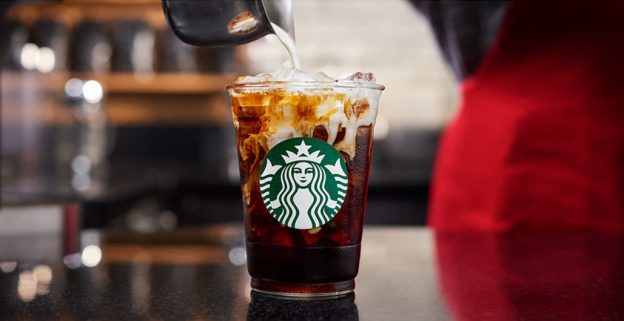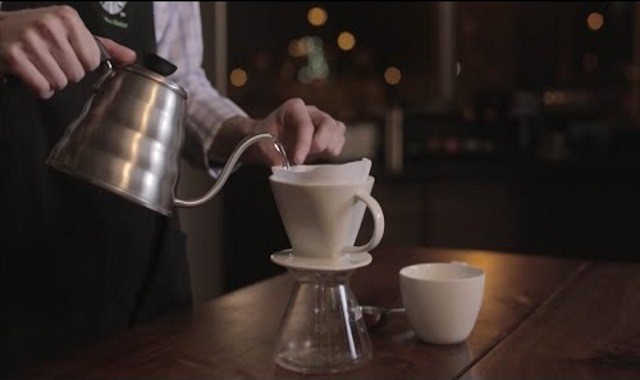Playing big in front of Guan Gong? Italy's first Starbucks to open in 2018

Just last week, Starbucks announced an ambitious Italian store opening plan for ── to open 300 stores in the cafe-ridden Mediterranean country, and two stores in Milan and Rome, where the water will be tested, will open in the summer of 2018 (originally scheduled to open this year, but delayed for various reasons). It definitely takes courage to open an American coffee chain in Italy.
Does Duke Guan play with a big knife in front of him?
Looking back to its origin, Italian coffee should be regarded as the "grandmaster" of Starbucks. The various coffee products we see on the Starbucks menu today, whether cappuccino, mocha or macchiato, latte (latte + coffee to be exact), all come from Italy, not to mention the famous espresso, almost all fancy coffee is processed on the basis of this small espresso.

Starbucks CEO Howard Schutz (Howard Shultz) also admitted that the Starbucks brand was inspired by "Milan barista craftsmanship, Italian spirit, social enthusiasm, friendliness and taste in quality." More importantly, Italy is a very attractive market for Starbucks. Although Italy's average annual coffee consumption per person is much lower than that of Nordic countries such as Sweden (10.4kg / year) and Finland (11.4kg / year), the total coffee consumption is still staggering because Italy has a population of more than 60 million. In 2014, Italians drank 5.9 million packets (60 kg / packet) of coffee, making it the second largest coffee consumer in Europe after Germany.
In Schutz's view, entering Italy is a "unique challenge". To curry favor with picky Italian consumers, Schutz said the country's first Starbucks would have "exquisite detail and respect for Italians and coffee culture".

Unlike Starbucks, which can serve as temporary office space, Italian cafes are mostly open-air, and locals prefer to sit on the street drinking coffee and enjoying the sun. Given Schutz's comments, Starbucks may also offer open-air seats in Italy to suit local habits. Do the Italians buy it? Although Starbucks has a low profile, whether arrogant Italians will buy it is another matter. After the news that Starbucks was going to open a store in Milan last year, many consumers were not optimistic about Starbucks' future in Italy.
"it is not suitable for Italian espresso culture, pure coffee lovers will not patronize. "one consumer said in an interview with the British newspaper the Independent. Even in the young consumer sector that Starbucks has always been good at, the situation does not seem to be very optimistic. Italians really do not like the so-called coffee from the other side of the Atlantic. This is what some young people interviewed said of Starbucks:
This is really annoying, the coffee here is so wonderful, Starbucks gives you a cup of charred stuff. It comes from the United States, but the Italians don't need it. Apart from cultural and customary differences, perhaps price is the main reason that prevents Italians from entering Starbucks. In Italy, the average price of a local espresso is only 1 euro, while that of a cappuccino is 1.40 euros. In economically depressed Italy, Starbucks' average selling price of 3 to 4 euros makes it difficult for locals to regard it as a daily expense.
However, Starbucks may be attracted not only by Italy's coffee culture and consumer market, but also by the large number of foreign tourists who come to Italy every year. Italy, the world's fifth-largest tourist country, received more than 50 million visitors in 2015, and the number is rising every year. At least in the perception of these foreign tourists, Starbucks is a good place to rest.
Starbucks is not the first multinational company to want to play tricks in Italy, which is famous for its delicious food. A similar situation has happened to McDonald's.
In 1986, when the first McDonald's in Italy opened near the famous Roman scenic spot Piazza Spain, it was opposed by the local slow Food Movement (Slow Food Movement). But as has happened in other countries, in Italy, McDonald's has become a popular fast food restaurant for locals, especially young people. In that case, who can assume that Starbucks cannot replicate the success of the former?
Important Notice :
前街咖啡 FrontStreet Coffee has moved to new addredd:
FrontStreet Coffee Address: 315,Donghua East Road,GuangZhou
Tel:020 38364473
- Prev

A great shock! Challenge Starbucks 85C Cafe the opening of the first store in Seattle is very popular
Sightseeing stock Wang Gourmet Talent Group's chain coffee brand "85C" has officially planted the flag in Seattle, the founding place of Starbucks Coffee. After the 85C store in Tukwila in Seattle opened on the morning of February 24th, it immediately attracted queues, strong popularity and strong popularity, so that the bad neighbors were impressed by the Taiwan chain coffee brand. At the same time, including Siya
- Next

Using Coffee as the medium-the Enlightenment of Beijing Garage Coffee
In recent years, garage coffee in Zhongguancun, Beijing has become famous. Here, entrepreneurs can sit for a day with a cup of coffee and have access to a variety of services, including office space, information exchange, and capital communication. In essence, Beijing garage coffee provides a communication place for entrepreneurs to start and work, which actually sells a kind of coffee culture and entrepreneurial articles.
Related
- What is the standard process for the purpose of coffee cup testing? What is the difference between hand-brewed coffee and cup testing?
- How to use hand-brewed coffee paragon small golden balls? How does cold coffee lock in the aroma of coffee?
- Is American coffee black? What is the difference between American coffee and drip coffee?
- Unexpected! Well-known tea beverage brand Lele Tea will withdraw from the Zhengzhou market!
- Starbucks enters the fashion and beauty industry?! Netizen: Give me an ice American eye cream
- Why can American refills for free? The difference between Americano and American drip pot coffee
- Being chased out of the rain in front of Starbucks?! Store: Sheltering from rain under umbrellas poses a safety hazard
- The white moonlight has changed?! Lucky launches "Big Winter Pear American"
- Hand-brewed coffee three-stage method, high-sweet and universal brewing method to share! What does the high sweet water level of hand-brewed coffee mean?
- What is the difference between raw, refined and full espresso coffee? How to extract espresso and taste good?

